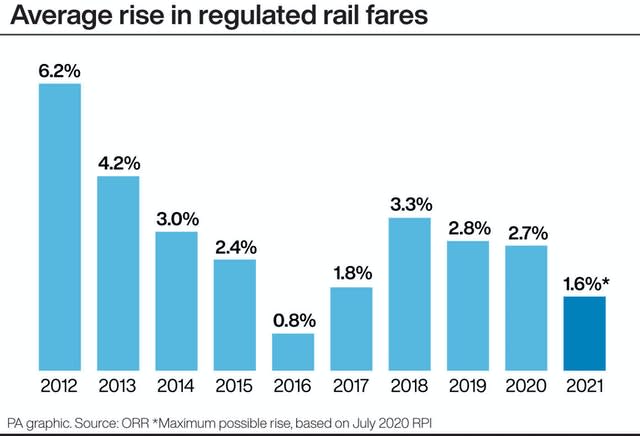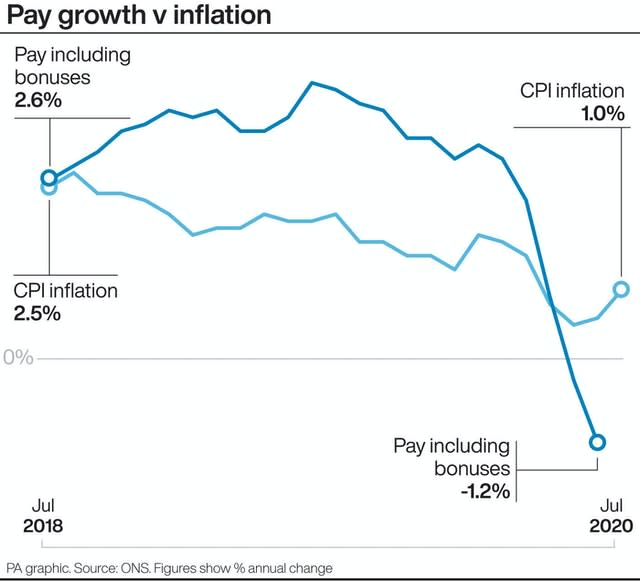Inflation surges on fuel costs and clothes prices after lockdown
UK inflation jumped to its highest level for four months in July after the largest hike in fuel prices for nearly a decade and as clothing retailers held off from steep discounts after lockdown, official figures have shown.
The Office for National Statistics (ONS) said Consumer Prices Index (CPI) inflation lifted unexpectedly to 1% in July from 0.6% in June.
This was far higher than expected, with most economists predicting the figure would stay flat at 0.6% for the month.
The Retail Prices Index (RPI), another measure of inflation, also surged last month, to 1.6% from 1.1% in June.

RPI is used to calculate the cap on annual rail season ticket price increases in Britain, meaning commuters face an increase in season ticket prices of 1.6% despite people being urged to return to workplaces.
Fares are usually increased every January, although there is speculation ministers are considering delaying the 2021 rise due to low passenger numbers.
The ONS said the leap in CPI came after petrol and diesel prices soared higher due to a rebound in global oil prices and as lockdown restrictions have eased worldwide.
A much smaller fall in the cost of women’s clothing last month compared with a year ago also drove the hike in the cost of living, with retailers holding off from the traditional hefty summer sales after reopening from lockdown.

Jonathan Athow, deputy national statistician for economic statistics at the ONS, said: “Inflation has risen, in part, due to the largest monthly pump price increase in nearly a decade, as international oil prices rose from their lows earlier this year.
“The largest upward movement came from clothing where prices fell on the month but by less than a year ago, partly due to different sales patterns throughout the year so far.
“In addition, prices for private dental treatment, physiotherapy and haircuts have increased with the need for PPE contributing to costs for these businesses.”
The ONS said petrol prices rose by 4.9p a litre to 111.4p between June and July, while diesel costs increased by 4p a litre to 116.7p – the largest monthly increase since December 2010 and January 2011.
Transport costs also increased as lockdown restrictions eased further last month, with the cost of coach and sea fares up, which was only partially offset by lower inflation year-on-year for air and international rail fares.
The ONS data showed that clothing retailers refrained from widespread discounting, having already slashed prices at the start of lockdown.

While price tags were cut, the fall was far lower than a year earlier, with women’s clothing prices down by 1.7% between June and July, compared with 4.4% a year ago.
Clothing and footwear prices are usually slashed each year between June and July as retailers look to shift summer stock ready for the arrival of autumn ranges.
Meanwhile, the CPI including owner-occupiers’ housing costs (CPIH) – the ONS’s preferred measure of inflation – was 1.1% last month, up from 0.8% in June.
Economists said the big leap in inflation was also down to the ONS’s decision to return to collection prices for services that were unavailable during lockdown, with inflation set to fall back again over the year ahead.
James Smith at ING said: “The combination of VAT changes and the ‘Eat Out to Help Out’ scheme mean we’re set for a big downward move in August, while the rise in unemployment means domestically generated inflation is set to remain muted.”

 Yahoo News
Yahoo News 
